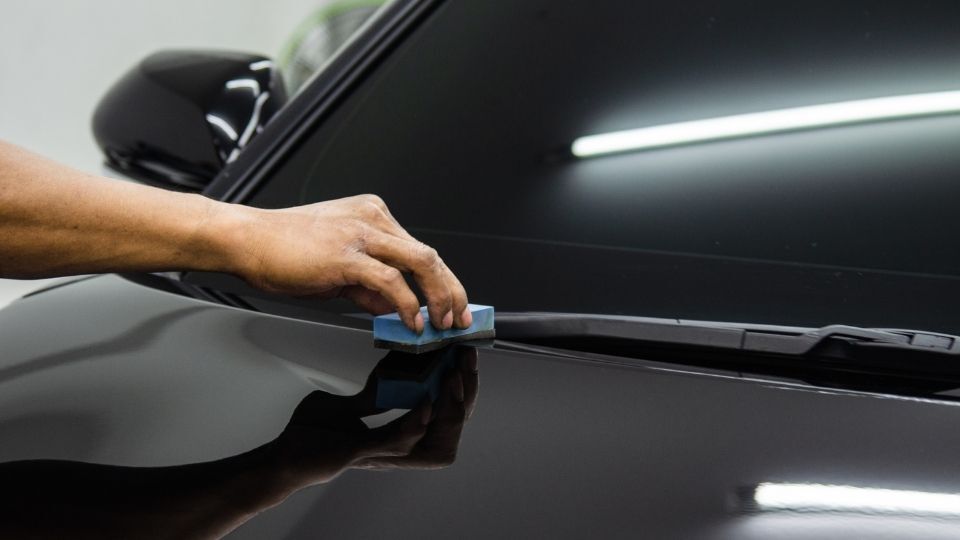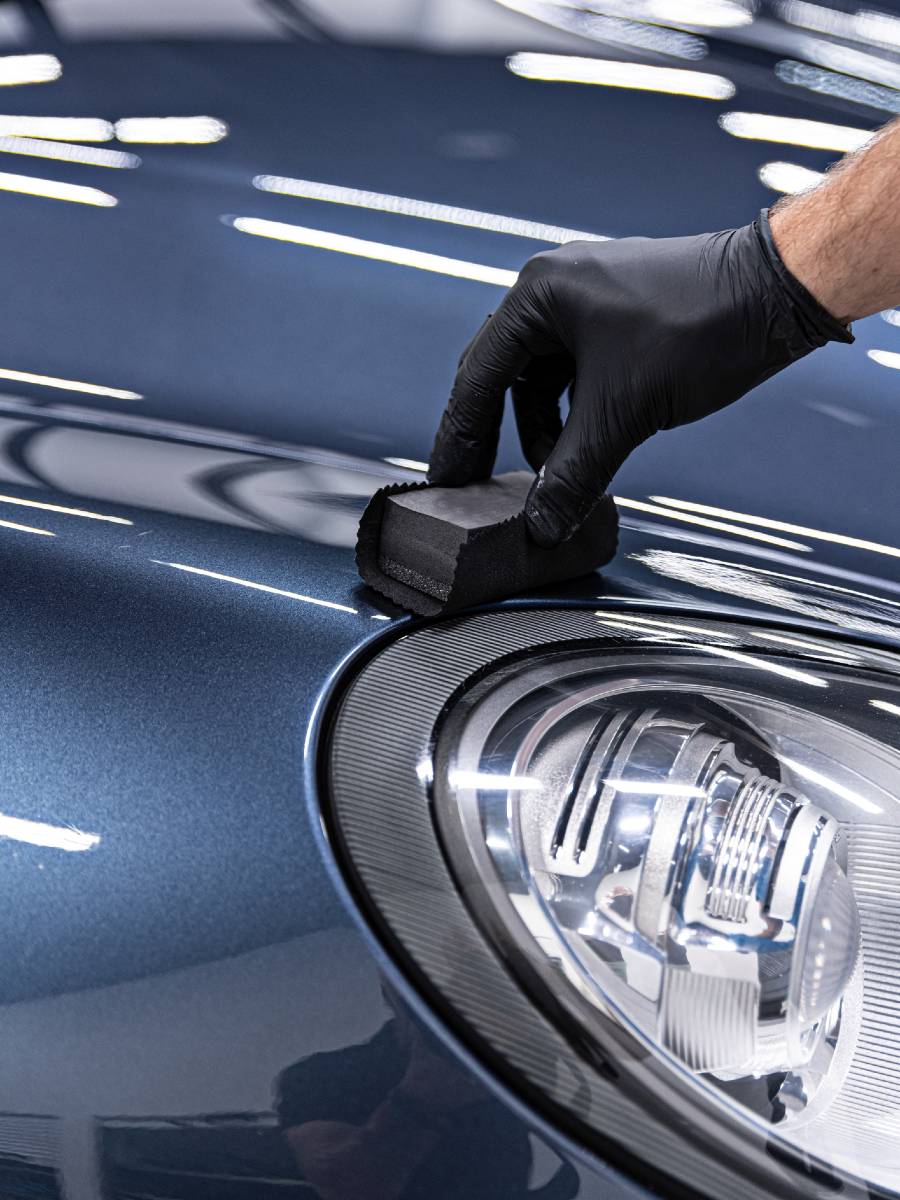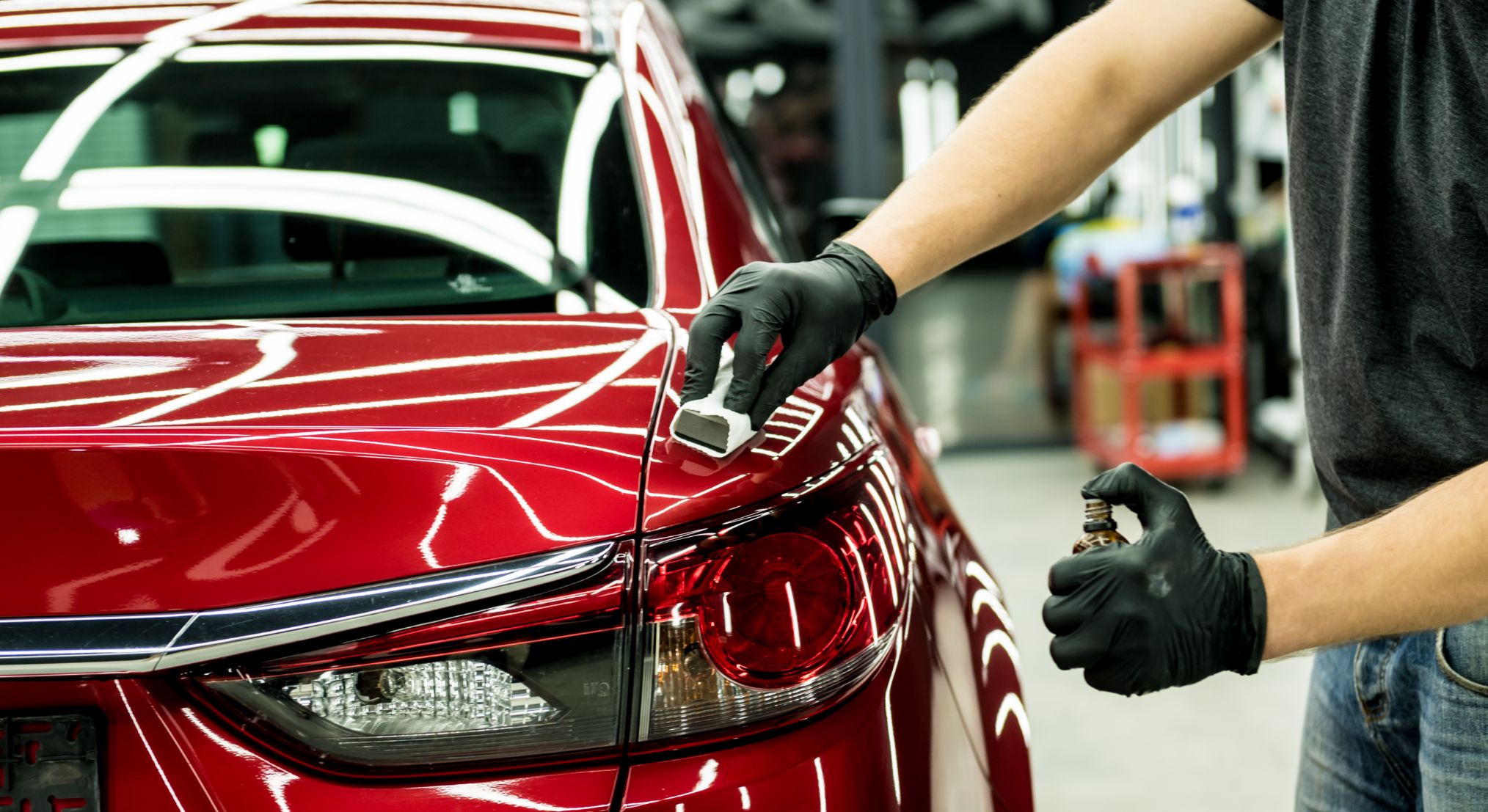Ceramic Coating for Cars: The Ultimate Solution for a Glossy Finish
Ceramic Coating for Cars: The Ultimate Solution for a Glossy Finish
Blog Article
Ceramic Finishing vs. Typical Wax: Which Offers Much Better Long-Term Security?
The argument in between ceramic coatings and traditional wax for car security has actually gathered substantial focus amongst auto enthusiasts and specialists alike. Ceramic coatings boast superior durability and resistance to ecological aspects, yet the intricacy of their application elevates concerns concerning availability and usefulness.
Review of Ceramic Finishing
Ceramic layer has actually gotten substantial popularity among vehicle fanatics and detailers alike due to its sophisticated safety qualities. This innovative modern technology is designed to create a durable, hydrophobic shield over a vehicle's paint surface area, considerably improving its resistance to ecological impurities such as dirt, UV rays, and chemical spots. Unlike conventional wax, which provides a short-term layer of protection, ceramic coverings bond at a molecular degree with the paint, offering resilient durability-- usually expanding beyond two years with correct maintenance.
The application process involves careful prep work of the lorry's surface, consisting of cleaning and polishing to guarantee ideal adhesion. When used, the layer treatments to develop a robust layer that not only includes depth and gloss to the paint yet also simplifies upkeep. With its hydrophobic residential or commercial properties, ceramic finishing permits water and dirt to glide off even more conveniently, reducing the frequency of laundries and reducing the danger of swirl marks.
Moreover, ceramic coverings are offered in different solutions, permitting customers to select items tailored to their particular requirements and preferences. Overall, ceramic finishing represents a substantial development in paint security technology, supplying superior performance compared to traditional choices.
Review of Traditional Wax
Typically considered as a staple in auto treatment, wax functions as a preferred selection for those seeking a simple method to enhance and safeguard their car's paint - ceramic coating. Automotive wax usually makes up all-natural ingredients, such as carnauba, or synthetic substances, created to produce a safety layer externally of the paint. This layer not only enhances the lorry's gloss and beam but additionally offers an obstacle against environmental impurities
The application of wax is typically easy to use, making it obtainable for both specialists and do it yourself fanatics. It can be used by hand or equipment, allowing for convenience in the detailing procedure. Once applied, wax requires a curing period, after which it sets to form a protective covering. Wax is likewise recognized for its capability to drive away water, promoting a beading result that aids in the prevention of water spots and deterioration.
However, while wax works for improving the visual allure of a car, it is essential to keep in mind that the security it provides might require extra regular reapplication contrasted to different items, such as ceramic coverings. In general, standard wax continues to be a favored alternative for those prioritizing simplicity of use and instant aesthetic improvement.
Sturdiness and Long Life Contrast
While both ceramic coverings and typical wax deal safety benefits for automobile paint, their sturdiness and longevity vary dramatically. Conventional wax, commonly made from natural carnauba or synthetic polymers, typically supplies a protective layer that lasts roughly 3 to 6 months. This reasonably brief life expectancy necessitates routine reapplication to maintain ideal security.
On the other hand, ceramic coverings are engineered from sophisticated nanotechnology, developing a covalent bond with the paint surface. This leads to a robust, hydrophobic layer that can endure for 2 to 5 years, relying on the item and environmental problems. The remarkable sturdiness of ceramic layers is attributed to their chemical framework, which uses enhanced resistance to scratches, UV rays, and oxidation.

Defense Against Ecological Aspects
Protecting a vehicle's paint from ecological variables is important for keeping its appearance and value over time. Autos are regularly revealed to a range of Full Report aspects, including UV rays, bird droppings, tree sap, acid rain, and road crud, every one of which can compromise the integrity of the paintwork.
Ceramic finishings offer a robust defense against these environmental aggressors. Unlike conventional wax, which can weaken swiftly under UV direct exposure, ceramic layers form a resilient, hydrophobic layer that stands up to the damaging effects of sunlight and ecological contaminants. This advanced technology develops a chemical bond with the car's surface area, providing remarkable protection that lasts for many years, also in severe conditions.
In contrast, ceramic coverings preserve their safety qualities much longer, considerably minimizing the risk of paint damages and ensuring that the lorry retains its Going Here aesthetic charm. As a result, ceramic finishes are significantly identified as the superior option for lasting defense versus environmental elements.
Application and Maintenance Distinctions
The methods of application and subsequent upkeep for ceramic finishes and traditional wax differ dramatically, influencing the total customer experience and effectiveness of each item. Ceramic coverings need a more complex application process, typically entailing surface prep work that consists of cleaning, sanitizing, and polishing the car. As soon as the surface is all set, the ceramic layer is applied in a regulated environment, usually requiring expert knowledge to ensure correct healing and bonding to the paint.

While both items boost vehicle look, the longer-lasting security provided by ceramic finishings might warrant their preliminary financial investment, in spite of the more demanding application process. Conversely, typical wax see this remains a prominent option for those seeking a simpler, albeit temporary, service.

Final Thought
To conclude, ceramic coverings demonstrate significant benefits over traditional wax in terms of resilience and environmental security. With a life expectancy prolonging two to five years and superior resistance to UV rays, dirt, and chemical spots, ceramic coverings supply a much more reliable remedy for lasting lorry upkeep. Although the application process may need expert know-how, the resulting price financial savings and minimized frequency of reapplication highlight the value of ceramic finishings for those seeking ideal car security.
The debate in between ceramic layers and traditional wax for car security has amassed significant focus amongst vehicle enthusiasts and experts alike. Unlike traditional wax, which supplies a short-term layer of defense, ceramic layers bond at a molecular level with the paint, providing long-lasting durability-- frequently extending past 2 years with correct upkeep.
While both ceramic finishings and typical wax deal protective advantages for automotive paint, their longevity and long life vary considerably. For auto enthusiasts seeking long-term security, ceramic finishings present a compelling advantage over typical wax items.
In verdict, ceramic layers show substantial benefits over traditional wax in terms of toughness and ecological protection.
Report this page